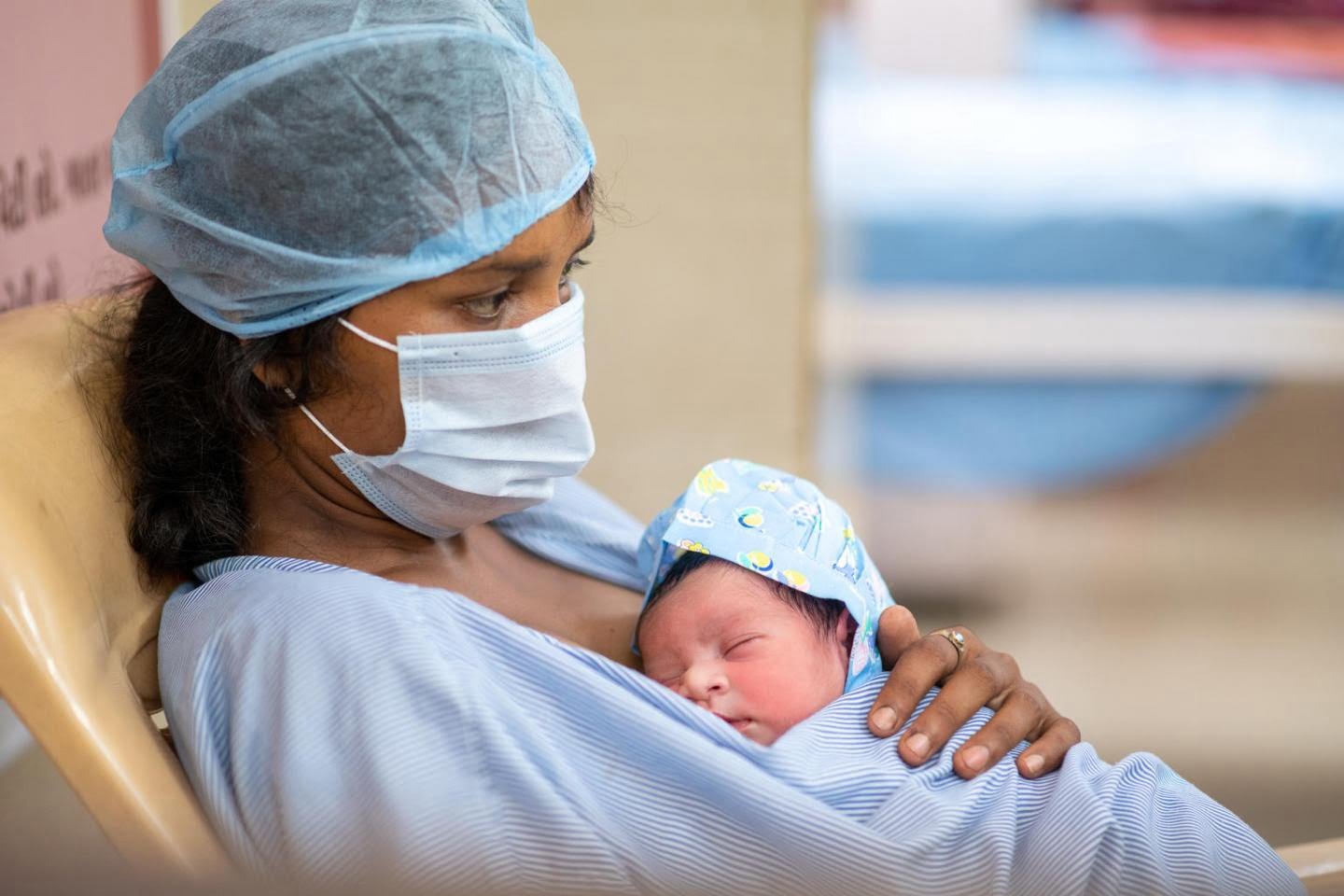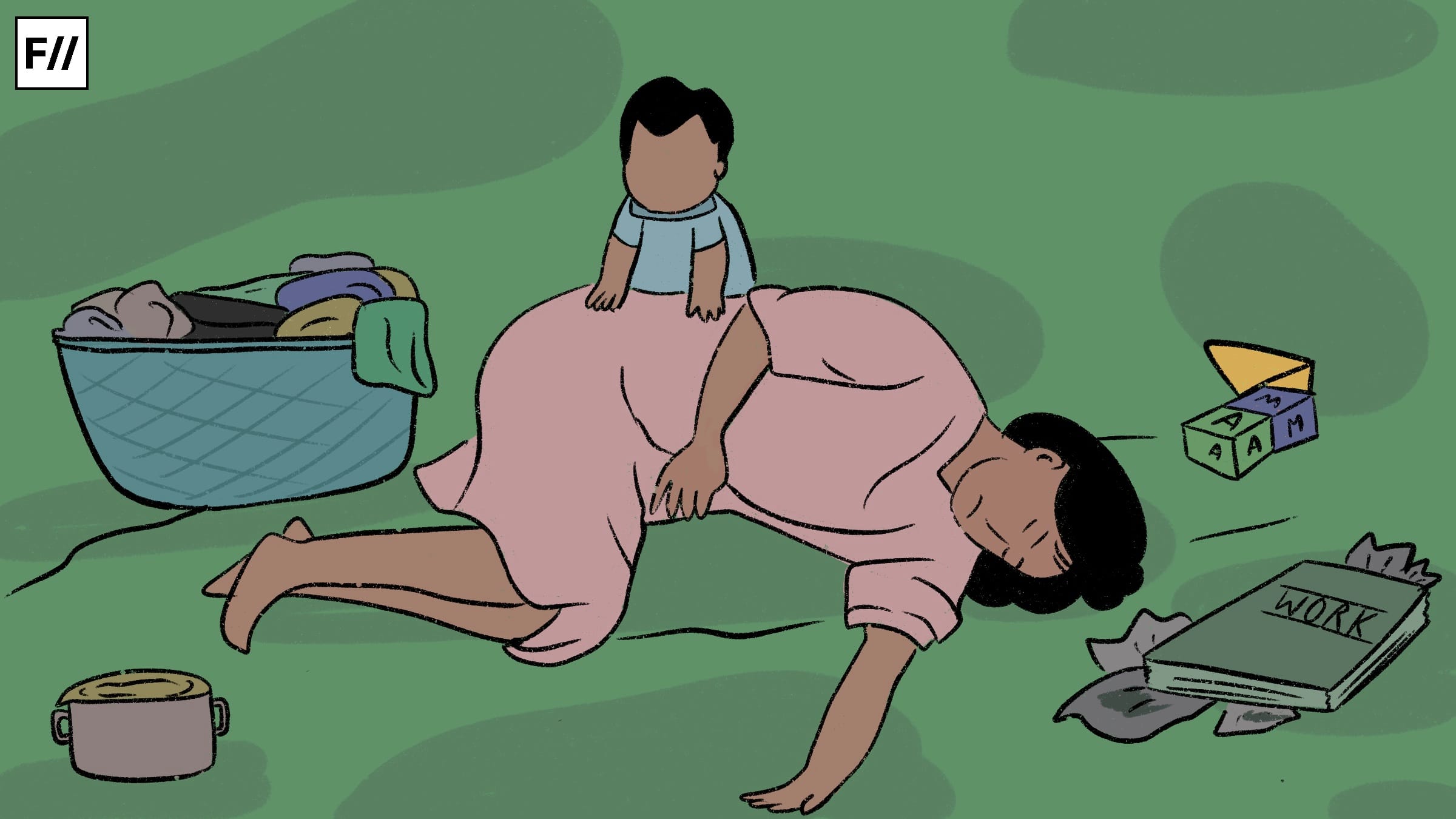The Registrar General of India released a Sample Registration System (SRS) estimate claiming that there is a steep decline in the Maternal Mortality Ratio (MMR) in India. Since its history of being recorded officially, MMR has continued to dip annually. From 556 in 1990 to 103 in 2017-2019, India is projected to reach the Sustainable Development Goals (SDG) target set by the UN before its expected tenure. The SDG goal is to reduce the global maternal mortality ratio to less than 70 per 1,00,000 live births by 2030.
Maternal Mortality Ratio (MMR) is the number of maternal deaths recorded during a given period per 1,00,000 live births during the same time period. Maternal Mortality is the measure of the reproductive health of women in the area. India’s MMR has continuously dipped in the past years. In 1990 it was recorded at 556, in 2004 – 2006 it was 254, in 2015 – 2017 it was recorded to be 122, in 2016-2018 it was 113 and the latest data shows that in 2017 – 2019 it has been dipped to an all-time low of 103.
Maternal Mortality Ratio (MMR) is the number of maternal deaths recorded during a given period per 1,00,000 live births during the same time period. Maternal Mortality is the measure of the reproductive health of women in the area. India’s MMR has continuously dipped in the past years. In 1990 it was recorded at 556, in 2004 – 2006 it was 254, in 2015 – 2017 it was recorded to be 122, in 2016-2018 it was 113 and the latest data shows that in 2017 – 2019 it has been dipped to an all-time low of 103.
Also read: Pandemic Strains Rural Healthcare, Exacerbates Maternal Health In Rural Maharashtra
State-wise Analysis
While the majority of the states have been consistent in the dip in MMR, others have stumbled. The three states that have recorded the biggest drop are Uttar Pradesh (from 197 in 2016–18 to 167 in 2017-19), Bihar (149 in 2016–18 to 130 in 2017-19), and Rajasthan (164 in 2016-18 to 141 in 2017-19). Although the three states have witnessed a commendable decline, the numbers continue to remain very high.
A state-wise analysis of MMR could be divided into three categories. The first is Very High MMR (130 or more Maternal deaths per 1,00,000 live births), the second is High MMR (100-130 Maternal deaths per 1 lakh live births), and the third is Low MMR (71-100 Maternal deaths per 100,000 live births). Seven states that come under the first criteria are Rajasthan, Uttar Pradesh, Madhya Pradesh, Chattisgarh, Bihar, Odisha, and Assam. Three states that qualify for the second criteria are Punjab, Uttarakhand, and West Bengal. Two states that come under the third criteria of low MMR namely Haryana and Karnataka.
States Where MMR increased
Although the Maternal Mortality Ratio in the country has dipped significantly, it has still registered an increase in a few states. Some states like West Bengal, Haryana, and Uttarakhand have witnessed an increase in their MMR. While Haryana (96) has worsened by five points, it still remains in the low MMR category, whereas West Bengal (109) has witnessed a continual increase and has found itself in the High MMR category.
The ministry has advised these states to look deeply into the working of government schemes and diagnose the reason behind the poor performance. The socio-economic reasons are not discussed and are hushed. Maternal mortality is a measure of the reproductive health of women in an area, and if the data proves that the ratio is increasing, then the entire health system must be brought under question.
“Maternal death is the death of a woman while pregnant or within 42 days of termination of pregnancy, from any cause related to or aggravated by the pregnancy or its management,” said an official of the Health Ministry. For reference, the MMR in developed countries like Italy, Norway, Poland, and Belarus is 2. In Germany and UK MMR is 7, in Canada, it is 10, and in the US, it is 19. India’s neighboring countries have a very high MMR; Nepal has recorded 186 maternal deaths per 1 lakh live births, Bangladesh’s MMR is 173, and Pakistan is at 140. The only exception is China with an MMR of 18.3 which is way below the UN’s global goal.

Higher MMR In Haryana and Punjab
The Sustainable Development Goals (SDG) Report by Niti Ayog has shown how Haryana and Punjab have not managed to show any significant improvement in Maternal deaths. The study shows that these states also conduct proper immunisation of children in the age group of 9 – 11 months for BCG, measles, and 3 doses each of polio and DPT. The vaccines meant to end preventable deaths of newborns and children are a telling tale of the state of health in Haryana and Punjab.
However, the two states struggle with a lack of nourishment for the children. In Haryana, 34.9% of children under 5 years of age are stunted whereas in Punjab 28.4% are stunted. The aim is to reduce the number to 6%. Haryana does not have the manpower to provide health facilities. The state has only 26 physicians, nurses, and midwives per 10,000 population. Punjab (0.08) and Haryana (0.09) are among the states with a high number of HIV incidents per 1,000 unaffected populations. The average out-of-pocket expenditure of the two states is also very high on health.
The government schemes must have helped India to overcome the shadow of maternal mortality immensely, but the data only proves that there are parts still left in the dark. The lack of awareness and manpower stumbles the growth of these states and also pushes them into the darkness of health ignorance. The data printed ignores talking about these issues in detail.
Also read: Maternal Mortality Rate: Does India Really Care About Its Mothers?
Kerala and MMR
Kerala’s health structure has been applauded throughout and continues to prove its metal even when it comes to Maternal Mortality Ratio. The MMR of Kerala has dropped from 42 to 30. It is the only Indian state to continue to accelerate its performance despite already being better than the national average.
Kerala has achieved the target of 30 MMR by 2020, a year early. The sustainable and constant actions taken by the state have resulted in a steep decline in MMR. Kerala developed quality standards in Obstetric Care and focused on the management of some common causes of maternal deaths like postpartum hemorrhage, pregnancy-induced hypertension, sepsis, and amniotic fluid embolism. The state health machinery also made sure to tackle the mental illnesses caused by pregnancy such as depression.
Government Schemes and Steps
India has launched many schemes to tackle maternal mortality in India under the National Health Mission. In 1990, around 1.38 lakh women were dying every year due to pregnancy related issues. The Janani Suraksha Yojana was launched in April, 2005 to ensure that pregnant women are brought to health facilities for safe deliveries and emergency obstetric care. Janani Shishu Suraksha Karyakram (JSSK) was launched on April 1, 2005. It entitles all pregnant women delivering in public health institutions absolutely free and no expense delivery. It also provides free drugs, consumables, diet during stay, and free blood transfusion if required. The schemes make sure that the pregnant woman receives free transportation from health institute to her home.
The JSSK scheme expanded in 2013 to cover any complication during ante-natal and post-natal period. Some other measures by the government which proved effective were the establishment of separate Maternal and Child Health Wings, Maternal Death Review, Comprehensive Abortion Care, screening and care of Sexually Transmitted Infections (STIs) and Reproductive Tract Infections (RTIs). Skill Labs are set to tackle complicated births by nurses and midwives and other community-driven actions to be implemented at ground levels.
The JSSK scheme expanded in 2013 to cover any complication during ante-natal and post-natal period. Some other measures by the government which proved effective were the establishment of separate Maternal and Child Health Wings, Maternal Death Review, Comprehensive Abortion Care, screening and care of Sexually Transmitted Infections (STIs) and Reproductive Tract Infections (RTIs). Skill Labs are set to tackle complicated births by nurses and midwives and other community-driven actions to be implemented at ground levels.
Gap In The Data
Maternal Mortality Ratio is not only a testimony of the health infrastructure of a country. It is also the indicative of the diversity of health and its impact on poverty. Data around MMR is scanty and repetitive. The government brochures are replete with praises for the schemes they have launched and their implementation. But what about the cause behind maternal mortality? There are still women who are not enrolled in the data cycles and their deaths go unnoticed. Moreover, maternal mortality is also caused by early marriages, abusive relationships, mental trauma, and lack of awareness. Until exhaustive reports are printed with detailed reasons, the lack of data is only an illusion of a better health structure.
Featured image source: unicef.org
About the author(s)
Dr. Guni Vats is an Assistant Professor at the Department of English, Manav Rachna International Institute of Research and Studies. A PhD in Gender Studies, she is a renowned researcher, writer, and scholar.





